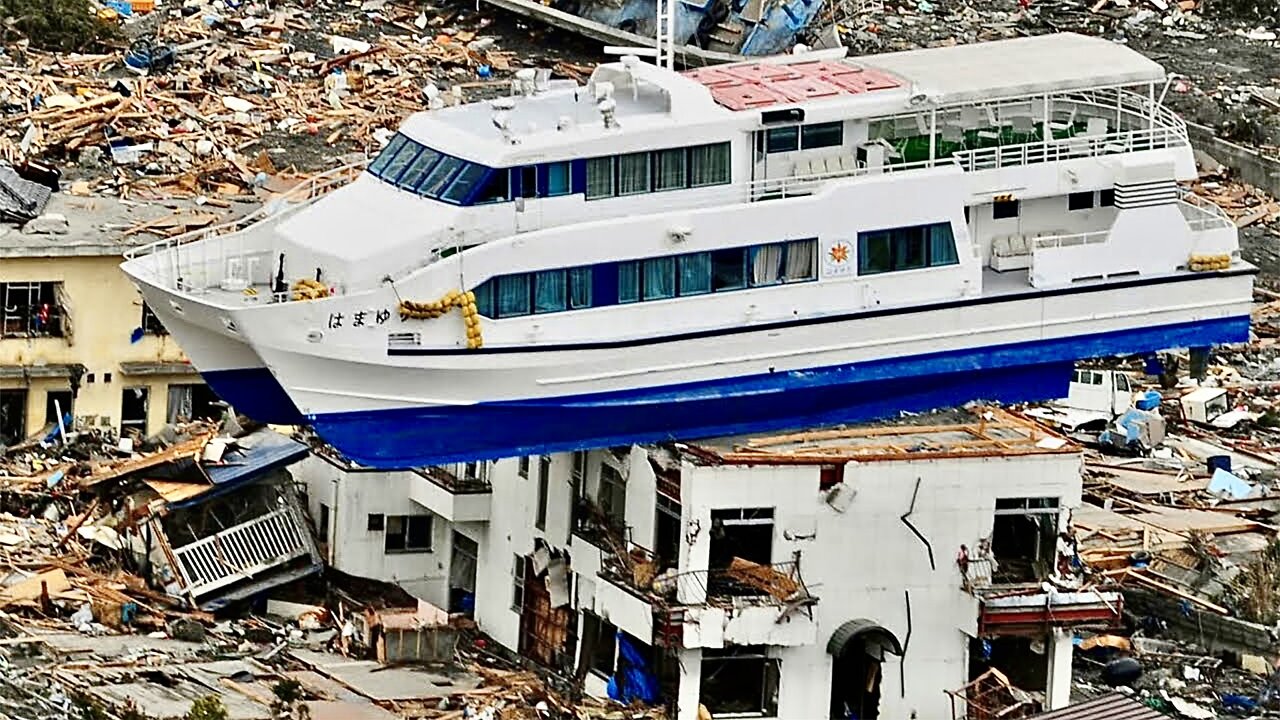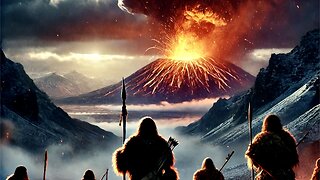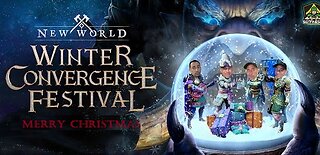Premium Only Content

Next Time You Have A Bad Day- Remember Japan's 2011 Tsunami - Astonishing Footage
Amazing Scenes of Japan 2011 Earthquake Tsunami. On March 11, 2011, a magnitude-9 earthquake shook northeastern Japan, unleashing a savage tsunami. The effects of the great earthquake were felt around the world, from Norway's fjords to Antarctica's ice sheet. Tsunami debris continues to wash up on North American beaches years later. The unexpected disaster was neither the largest nor the deadliest earthquake and tsunami to strike this century. That record goes to the 2004 Banda Aceh earthquake and tsunami in Sumatra, a magnitude-9.1, which killed more than 230,000 people. But Japan's one-two punch proved especially devastating for the earthquake-savvy country, because few scientists had predicted the country would experience such a large earthquake and tsunami.
Japan's scientists had forecast a smaller earthquake would strike the northern region of Honshu, the country's main island. Nor did they expect such a large tsunami. But there had been hints of the disaster to come. The areas flooded in 2011 closely matched those of a tsunami that hit Sendai in 869. In the decade before the 2011 Tohoku earthquake, a handful of Japanese geologists had begun to recognize that a large earthquake and tsunami had struck the northern Honshu region in 869. However, their warnings went unheeded by officials responsible for the country's earthquake hazard assessments. Now, tsunami experts from around the world have been asked to assess the history of past tsunamis in Japan, to better predict the country's future earthquake risk.
"For big earthquakes, the tsunami is going to be the big destructive factor," said Vasily Titov, director of the National Oceanic and Atmospheric Administration's Center for Tsunami Research in Seattle, Washington. "But if the nation is prepared, warning and education definitely saves lives. Compare the human lives lost in Sumatra and Japan. It's about 10 times less."
The 2011 Tohoku earthquake struck offshore of Japan, along a subduction zone where two of Earth's tectonic plates collide. In a subduction zone, one plate slides beneath another into the mantle, the hotter layer beneath the crust. The great plates are rough and stick together, building up energy that is released as earthquakes. East of Japan, the Pacific plate dives beneath the overriding Eurasian plate. The temblor completely released centuries of built up stress between the two tectonic plates, a recent study found.
The March 11 earthquake started on a Friday at 2:46 p.m. local time (5:46 a.m. UTC). It was centered on the seafloor 45 miles (72 kilometers) east of Tohoku, at a depth of 15 miles (24 km) below the surface. The shaking lasted about six minutes. [Infographic: How Japan's 2011 Earthquake Happened]
Scientists drilled into the subduction zone soon after the earthquake and discovered a thin, slippery clay layer lining the fault. The researchers think that this clay layer allowed the two plates to slide an incredible distance, some 164 feet (50 meters), facilitating the enormous earthquake and tsunami.
Music: Black Wind by Dhruva Aliman
Amazon- https://amzn.to/3eLFy0P
https://music.apple.com/us/artist/dhruva-aliman/363563637
https://dhruvaaliman.bandcamp.com/album/hello-moon
http://www.dhruvaaliman.com/
Spotify - https://open.spotify.com/artist/5XiFCr9iBKE6Cupltgnlet
-
 49:16
49:16
Knowledge Land
11 days agoThe Prehistoric Volcano That Nearly Wiped Out All Humanity - Full Documentary
412 -
 3:55:42
3:55:42
STARM1X16
6 hours agoMerry Christmas Fortnite
35.2K3 -
 2:45:33
2:45:33
Sgtfinesse
6 hours agoMerry Christmas Night
38.4K15 -
 LIVE
LIVE
tacetmort3m
22 hours ago🔴 LIVE - (MERRY CHRISTMAS) TIME TO SPREAD DEMOCRACY - HELLDIVERS 2 OMENS OF TYRANNY
69 watching -
 12:42
12:42
Cooking with Gruel
20 hours agoBrown Butter Trifle with Salted Caramel and Cinnamon Apple
14.4K3 -
 2:46
2:46
BIG NEM
9 hours agoDiscovering RAKIJA: The Holy Liquer of the Balkans
11.8K2 -
 1:11:38
1:11:38
Film Threat
14 hours agoCHRISTMAS DAY CHILL STREAM WITH CHRIS GORE | Hollywood on the Rocks
134K30 -
 14:22:40
14:22:40
The Quartering
1 day agoYule Log Christmas MAGA Edition With Memes! Come Hang Out!
224K29 -
 38:41
38:41
MYLUNCHBREAK CHANNEL PAGE
1 day agoTimeline Begins in 1800? - Pt 1 & 2
104K56 -
 1:23:41
1:23:41
Game On!
1 day ago $13.56 earnedNetflix NFL Christmas Games Preview and Predictions!
91.2K12